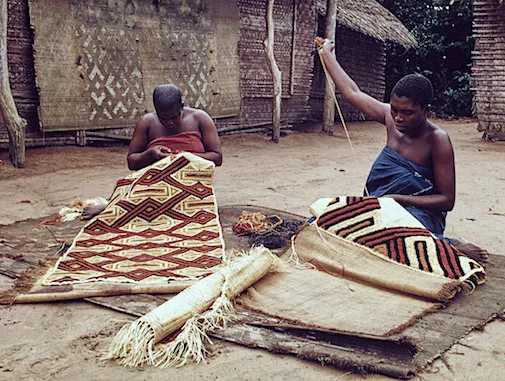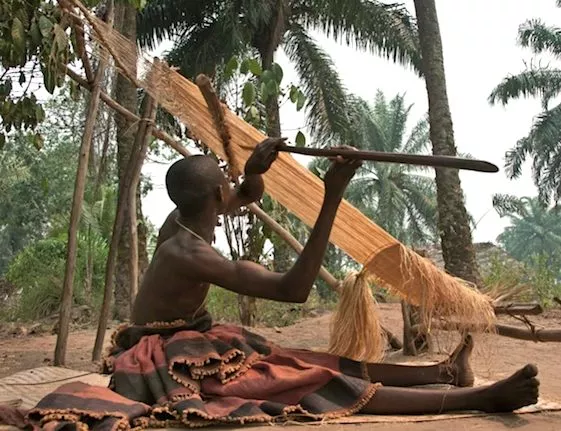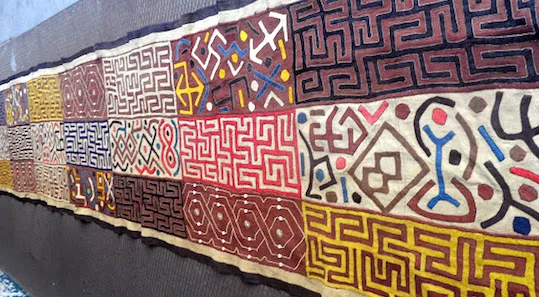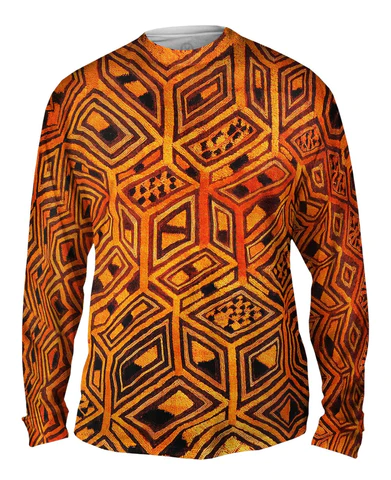Kuba Raffia Elegance: A Cultural Odyssey Through the Democratic Republic of Congo 🇨🇩
- la Djalobienne Eton

- Dec 8, 2023
- 3 min read
Updated: Dec 30, 2023
In the heartlands of Central Africa, the Kuba people of the Democratic Republic of Congo have interwoven a cultural narrative that extends far beyond the bounds of their vibrant traditions. Central to their cultural identity is the exquisite Kuba Raffia fabric, an exemplar of craftsmanship that serves as a canvas for this resilient community's artistic prowess and profound cultural significance. This textile tradition, rooted in centuries of history, beckons us to explore the captivating story embedded within each intricately woven thread and pattern, unveiling a rich tapestry that mirrors the essence of Kuba heritage.
The Origin and Unique Characteristics of Kuba Raffia Fabric
The Kuba people have a centuries-old tradition of creating intricate textiles
through the ancient art of raffia weaving, using fibers from the native African Raffia palm.
Men in Kuba society oversee the cultivation of raffia palms and the weaving process to produce Kuba Raffia cloth. This fabric is characterized by distinctive geometric designs and abstract motifs, with artisans, predominantly women, employing various weaving techniques. These patterns are not random; they convey stories, traditions, and the cultural identity of the Kuba people, serving as a tangible link to the community's rich oral history passed down through generations.
The Art and Patience Behind Kuba Cloth Embroidery
Crafting Kuba cloth is a meticulous and time-intensive process, often requiring several days, even for a modest placemat-sized piece. Men initiate the procedure by harvesting raffia tree leaves employing dyes from mud, indigo, or the camwood tree to color the fibers.
Softening the raffia by rubbing it in their hands facilitates the weaving process. Once the foundational cloth is completed, women take over for the embroidery phase. This involves delicately pulling threads from the raffia fibers, inserting them into a needle, and running the needle through the cloth until the fibers emerge on the opposite side. They trim the exposed fibers using a knife, creating intricate designs through hundreds of repetitions. Notably, these designs are often spontaneous, with little pre-planning, relying heavily on the skill and memory of the embroidered.
Variety in Design and Preservation of Tradition
Traditionally worn during ceremonial events, the Kuba cloth is a wraparound
skirt intricately woven from raffia palm fibers and secured with a sash. It is a versatile and unisex garment, often worn over a plain red or cream embroidered skirt.
The Kuba Raffia fabric displays diverse designs that communicate stories of lineage, social status, and significant events within the Kuba community. Despite embracing modernity, the Kuba people prioritize the preservation of Raffia fabric as a vital aspect of their cultural heritage. Ongoing initiatives aim to ensure the transfer of essential skills and knowledge associated with Kuba Raffia weaving to future generations.
The Role of Kuba Raffia in Society
In Kuba society, Raffia fabric is not merely a decorative textile but an essential part of various cultural ceremonies and rituals. It is used to create clothing, masks, and ceremonial objects, adding a layer of cultural significance to these items. The fabric is also used as currency in some instances, highlighting its value not only as an artistic creation but also as a practical commodity within the community.
Kuba Raffia is multifaceted in Kuba society, serving as a cultural symbol deeply entwined with identity, ceremonies, and social structure. Beyond its economic value and practical uses, the fabric communicates stories and traditions, preserving the rich heritage of the Kuba people. The collaborative process of creating Kuba Raffia fosters community bonding, and its adaptability to modern contexts ensures its relevance in contemporary settings, making it not just a textile but a dynamic expression of cultural continuity and artistic legacy.
The Kuba Raffia fabric is a testament to the rich cultural heritage of the Kuba people. Its intricate designs, symbolic meanings, and cultural significance make it a unique and invaluable art form. As efforts continue to preserve and celebrate this tradition, the Kuba Raffia fabric remains a shining example of how art and culture can be woven together to create a vibrant and enduring legacy.
As Kuba cloth reveals, the artistry of life lies in the delicate dance of threads, intertwining tales of heritage and perseverance. - La Djalobienne Eton
References:










































Comments